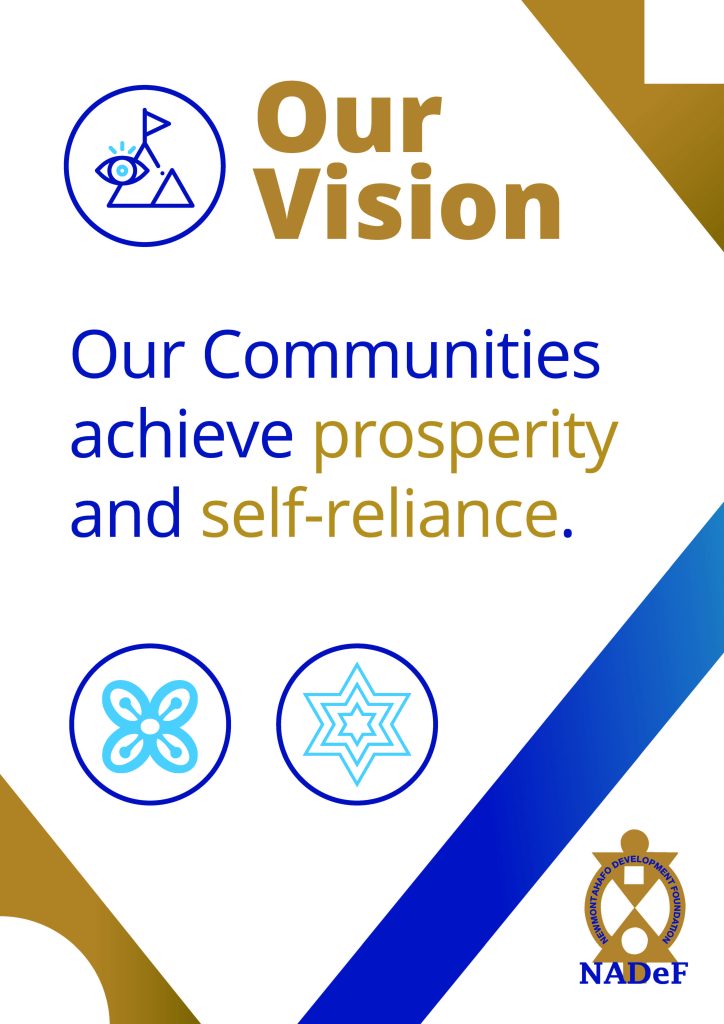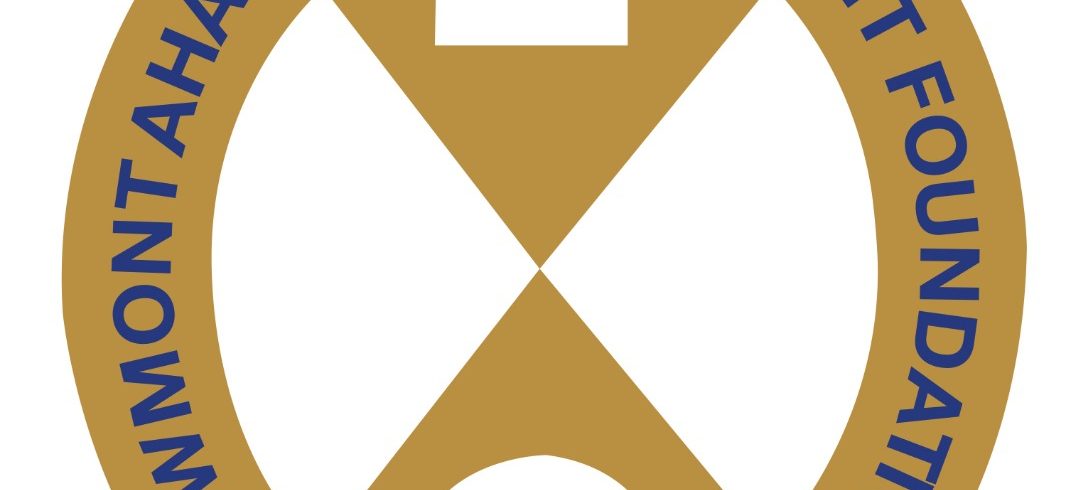In the heart of Ghana’s Ahafo Region, a quiet revolution in community development is taking root. Across ten host communities of Newmont Ghana Gold Limited (NGGL), thousands of individuals are rewriting their economic stories, one small business, one loan, one idea at a time. The engine driving this transformation is the Newmont Ahafo Development Foundation (NADeF), a model of corporate social responsibility that could become a national benchmark for community-driven development.
Since its establishment in May 2008, NADeF has been at the forefront of fostering sustainable growth and improving livelihoods in Ahafo. Through an extensive range of infrastructural and non-infrastructural projects, the Foundation has invested millions of Ghana cedis in education, health, infrastructure, and, perhaps most importantly, economic empowerment. Today, as local entrepreneurs in towns like Kenyasi, Gyedu, Ntotroso, Wamahinso, and Terchire expand their enterprises or start new ventures, one message rings clear — economic empowerment is not just an initiative; it’s a lifeline.
As of October 2025, NADeF had disbursed a total of GHc9,137,06.00 to 2,656 business owners while an amount of 2,510,897.00 to 28 clients as business start-ups. In all, NADeF has injected GHc11,647,957 to 2,684 under its Economic Empowerment module.
Empowering Dreams, Building Economies

At the core of NADeF’s mission lies a simple yet powerful goal: to improve and diversify the local economy by empowering individuals to create wealth, generate employment, and improve standards of living. This goal is encapsulated in NADeF’s Economic Empowerment module, one of its seven thematic areas, which focuses on micro-credit and business start-ups.
Over the years, NADeF has supported small and medium-scale enterprises (SMEs) with more than GHS 9.7 million, channeled into agriculture, manufacturing, services, and trade. The impact has been tangible — new jobs have been created, family incomes have increased, and local supply chains have become more resilient.
From the vibrant markets of Kenyasi to the farmlands of Afrisipakrom, countless success stories have emerged. A hairdresser now employs apprentices in Ntotroso; a pig farmer in Gyedu has expanded her farm; a group of bakers in Kenyasi have turned their ovens into engines of change.
But beneath these stories of success lies a well-structured, community-led financial system that ensures transparency, accountability, and sustainability — the Micro-Credit Scheme.
The Micro-Credit Revolution
The NADeF Micro-Credit Scheme is a carefully designed initiative that gives residents access to affordable credit to start or expand their businesses. It operates in nine participating communities: Kenyasi No.1, Kenyasi No.2, Ntotroso, Gyedu, Wamahinso, Afrisipakrom, Susuanso, Terchire, and Adrobaa.
The philosophy behind the scheme is simple – when people have easy access to capital, they can create jobs, generate income, and strengthen their communities. However, unlike many credit programs that struggle with repayment or lack local oversight, NADeF’s model stands out for its community ownership.
Each participating community has a Micro-Credit Management Committee (MCMC) composed of local members who oversee every step of the process, from creating awareness and issuing loan forms to monitoring repayments and following up with clients. This community-based approach not only promotes accountability but also ensures that funds are managed with a deep understanding of local realities.
How the Scheme Works
Interested applicants, often traders, artisans, or farmers, apply for loans through their community at MCMC. The process is straightforward but thorough. Applicants must submit a completed form, a passport-size photograph, and present two guarantors to back their application.
Successful applicants receive loans ranging between GHS 1,000 and GHS 20,000, depending on the scale of their business. The repayment period is between six and seven months with an interest rate of just 5%, far below what is typically offered by traditional microfinance institutions.
Repayments are made directly to designated bank accounts under the supervision of group or individual leaders. To maintain the scheme’s sustainability, MCMCs ensure 100% loan recovery before disbursing new loans.
Numbers That Tell a Story
Behind the micro-credit initiative are figures that reflect both scale and impact.
| No | Community | Amount Disbursed (GHS) | Accrued Interest (GHS) |
| 1. | Kenyasi No.1 | 922,500.00 | 46,125.00 |
| 2. | Kenyasi No.2 | 952,200.00 | 47,610.00 |
| 3. | Gyedu | 370,000.00 | 18,500.00 |
| 4. | Ntotroso | 806,000.00 | 40,300.00 |
| 5. | Wamahinso | 421,000.00 | 21,050.00 |
| 6. | Terchire | 612,000.00 | 30,600.00 |
| 7 | Afrisipakrom | 546,500.00 | 27,325.00 |
| 8. | Susuanso | 389,500.00 | 19,475.00 |
Together, these figures tell a powerful story of how community-based financial inclusion can fuel grassroots’ development. Every credit disbursed is not just a loan — it’s an investment in human potential.
Business Start-Up Support: Planting the Seeds of Entrepreneurship
In addition to micro-credit, NADeF’s Business Start-Up Support offers seed funding to help aspiring entrepreneurs launch new ventures. This component targets individuals with viable business ideas but limited financial means.
So far, 15 entrepreneurs across Ntotroso, Gyedu, and Kenyasi No.2 have benefited, with a total of GHS 660,897.50 disbursed. The supported enterprises span a wide array of sectors — from hairdressing, bakery, and decoration services to pig farming, printing, and general trading.
Sustaining Impact Through Accountability
To maintain transparency, NADeF has built a strong monitoring and accountability framework. The Micro-Credit Management Committees (MCMC) play a pivotal role in supervising loan use and repayment.
They ensure that:
- Loans are disbursed only to qualified applicants.
- Repayments are tracked diligently.
- Recovered funds are deposited into official accounts.
- Regular reports are provided to the Sustainable Development Committees (SDCs).
Additionally, MCMCs receive a modest imprest — typically GHS 5,000 or 1.5% of total loans disbursed — to support administrative functions such as client visits, business assessments, and follow-ups. This ensures the committees remain functional and efficient throughout the loan cycle.
Beyond Loans: Building a Culture of Self-Reliance
What sets NADeF’s Economic Empowerment program apart is that it goes beyond providing funds; it nurtures a culture of entrepreneurship and self-reliance.
Training sessions on business management, record keeping, and financial literacy equip beneficiaries with the skills to manage their ventures effectively. These workshops are often facilitated in partnership with local business experts and financial institutions.
As a result, beneficiaries are not only better equipped to run their businesses but also more confident in making financial decisions – a crucial ingredient for long-term sustainability.
In communities where subsistence farming was once the mainstay, a new generation of small-scale entrepreneurs is emerging. They are proving that with the right support, rural economies can thrive on innovation and enterprise.
The Ripple Effect: Stories of Change
The true measure of NADeF’s success lies in the stories of people whose lives have been transformed.
- In Wamahinso, a group of young mechanics who once lacked proper equipment now operate a thriving workshop, training apprentices, and servicing vehicles from neighboring towns.
- In Gyedu, a widow who received a GHS 3,000 loan to expand her soap-making business now supplies her products to schools and nearby markets.
- In Terchire, a baker’s modest oven has grown into a bustling bakery employing five people.
Each of these stories represents more than personal success, they are symbols of collective progress, illustrating how access to opportunity can change entire communities.
Conclusion: The Promise of Empowerment
Over the past decade and a half, NADeF has redefined what it means for corporate operations to coexist with community development. Through its Economic Empowerment program, it has shown that sustainable progress is achieved not through handouts, but through opportunity, capacity building, partnership, and empowerment.
As Ahafo’s entrepreneurs continue to thrive; from Kenyasi’s bustling shops to Adrobaa’s emerging markets; NADeF stands as a beacon of hope, proving that when communities are trusted with the tools to build their future, they can transform challenges into lasting prosperity.
In the words of a beneficiary from Afrisipakrom: “They didn’t just give us money; they gave us belief – belief that we can make something of our own.”
And that belief, more than anything, is what keeps Ahafo’s heartbeat strong.


